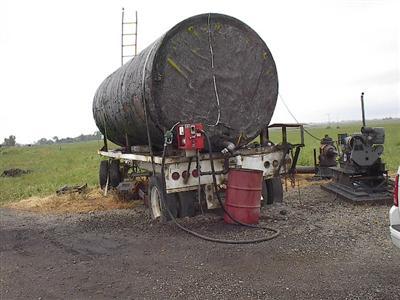
PRICE CAN BE STRONGER

FT wrote, one of the factors both accompanying and abetting the current rally in emerging market assets is the recent jump in the oil price, with Brent crude up about one-fifth to $50 a barrel since the start of this month. It is now back to levels not seen since last autumn (apart from a brief flurry this June). What is going on?
Quite a number of things, argues Medley Global Advisors, a macro research service owned by the FT. On top of the weaker dollar and technical factors such as reduced summer trading and expiries in the options markets there is a continued drawdown in US gasoline inventories, US production declines and dreams of a cold northern hemisphere winter (of which more later).
But the most immediate spur to the crude price has been talk from Saudi Arabia's new oil minister that hinted at another attempt by the kingdom to organise an output freeze among Opec members.
To most investors, the oil cartel continues to look like a dysfunctional organisation. There are few things the Saudis and Iranians can agree on, for a start. And the former have been raising their own production over the summer while preaching forbearance at others — though much of that extra oil is being burnt domestically rather than exported. So the risk of a market disappointment leading up to the next Opec meeting, which is not until the end of November, is very possible.
Having said that, the Saudis very much regard $50/barrel as a floor for the oil price and are already extending feelers to Russia and other less hardline Opec members regarding potential output quotas, while their own exports have actually been stable to slightly down this year. So some type of production freeze remains a real possibility.
Meanwhile, the global balance between supply and demand continues to adjust in favour of higher prices. Output in Nigeria is hovering around 1.4m barrels/day, some 700,000 b/d down from 2015's peak as more than 10 separate attacks on facilities in the Niger Delta this year have taken their toll. MGA remains pessimistic about the government's capacity to pacify a new generation of militants who are pushing — however unrealistically, ultimately — to secede from Abuja.
In Libya, despite repeated attempts to establish a unified government and some success in pushing back Isis, infighting between the various rival political and religious movements remains the order of the day and the bulk of the country's oil facilities remain shut in. Libya, which once pumped 1.6m b/d is currently managing just over 300,000 b/d.
On top of that, Angola is on course for a big drop in output later this year as its refineries go into maintenance and production is also down across most of Latin America (especially Venezuela) and — most significantly — in the US shale oil basins.
The US, in fact, is the final piece in the puzzle since this is where the rebalancing of supply and demand can be most easily observed and monitored. This rebalancing hit a hiccup earlier this year as the exceptionally warm winter caused American refineries to switch early and aggressively from producing distillates (which encompass fuel oil, diesel and kerosene) used for heating to making more gasoline (petrol). The result has been soaring gasoline inventories that have depressed refinery margins, causing them to process less crude ... which has fed back in the form of a lower oil price.
That process should reverse as we head for the autumn and then into winter, Medley believes, as refineries shift back to producing distillates. And while distillate inventories are high by historical standards, they are in better shape than gasoline stocks. The key to what happens next is what kind of winter we will get in the US and the northern hemisphere in general.
A big part of the unseasonably warm winter in 2015/16 was due to the strongest El Niño effect in the past 40 years, as measured by the rise in water temperatures in the equatorial Pacific. This tends to have a warming effect across the globe.
Notably, a strong El Niño tends to be followed by a strong La Nina, during which cool water wells back up into the Pacific and reverses everything. This happened in the early 1980s, the mid-1990s and most recently when a warm 2009/10 was followed by a very cold northern winter in 2011/12 — boosting demand for heating fuel and thus running down inventories and pushing up prices.
Forecasting the weather is hardly a sound investment strategy. But coupled with all the other factors discussed above, it suggests that crude oil could be entering a more stable trading range of $50-$70/barrel rather than falling back below $50 again for a significant period. Not only would that please the Saudis, it also suggests significant upside for investors compared with what is currently priced into the market.
-----
Earlier:







